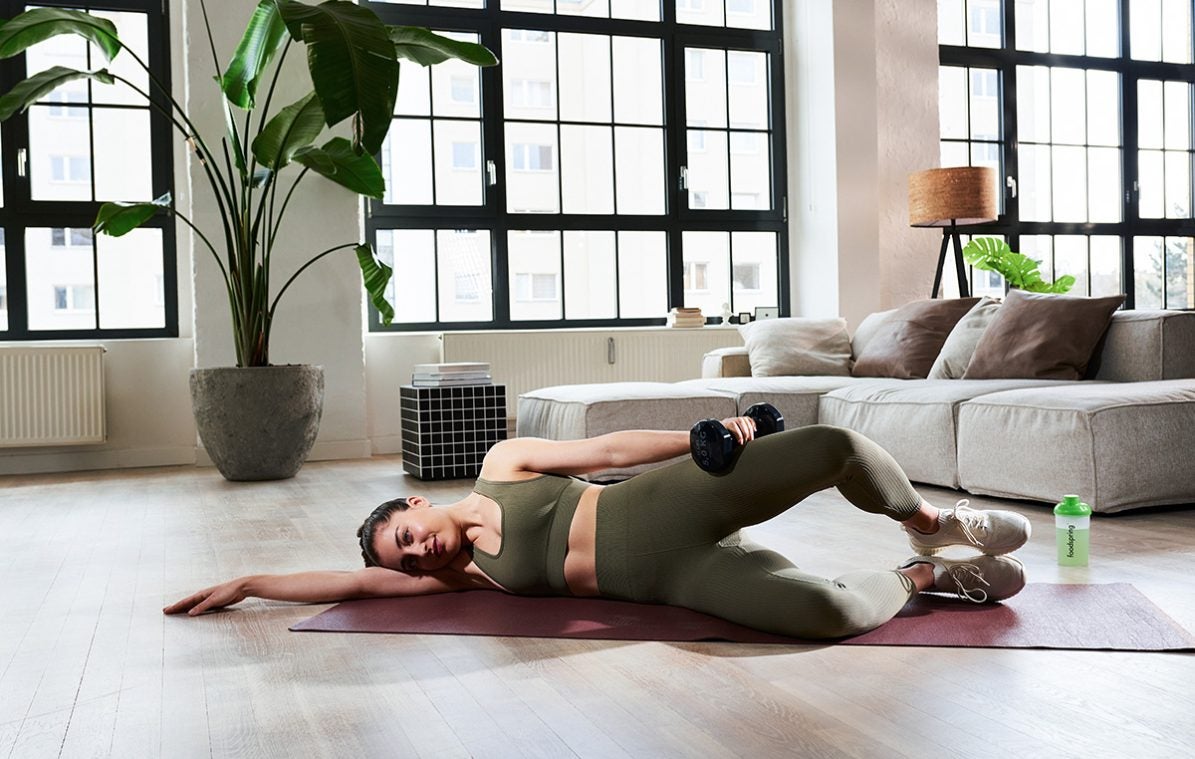4 Reasons You Should Stop Neglecting Your Abductor Muscles, According to Science
 © foodspring
© foodspring
As well as toning your butt, training your abductors will give you strong glutes, thigh and hip muscles so your body can do everything you want it to in everyday life. So if you’re the kind of person who prefers to just work the muscles you can actually see in the gym, you should give your training plan an overhaul. As inconspicuous as your abductors may seem, they’re essential for a fit and healthy body. Read on to find out why you should start giving your abductors an extra workout on a regular basis.
Find out more: Did you know that the gluteus medius muscle is also part of your abductors? Find out here how to train your abductors specifically.
What do your abductors actually do?
If you want to understand the importance of these muscles, it’s worth starting by taking a look at the role your abductors play in your body and how they differ from your adductors.
The abductors (from Latin, meaning "lead away") is the name for a muscle group responsible for all muscle movements away from the body. The largest abductors are in the outer thigh and buttock area and consist of the middle gluteus muscle (gluteus medius), the small gluteus muscle (gluteus minimus) and the piriform muscle (piriformis). The piriformis is a pear-shaped skeletal muscle that primarily regulates the hip joints’ external rotation. Abductors are also referred to as thigh abductors or hip abductors.
As the Latin name suggests, the abductor muscles produce all the movements that move your limbs away from your body; for example, extending your leg away from your body.
Adductors (from Latin, meaning "to lead"), on the other hand, are the opponents (antagonists) of abductors. They are all the muscles that pull body parts toward the body. So using the same example, the thigh adductors ensure that you can pull your outstretched leg back towards your body. Abductors and adductors can only function by working closely together. But as well as ensuring we can walk balanced and upright, or bend and rotate our hip joints,
we also need abductors for dancing, jumping, climbing stairs, getting in and out of cars, and getting on or off bikes. If you want your body to be able to perform these functions without any problems, it’s essential that you strengthen this important muscle group with regular training. Regular abductor training can also help with typical sports injuries.
1. Training Your Abductors Can Relieve Knee Pain
If your knee twinges with every movement, or if you can’t do your usual sports program because of the pain, you should pay more attention to your hip abductors in your workout.
According to a scientific study published in the “Physical Therapy & Rehabilitation Journal” people who train their abductors regularly can get knee problems under control or even prevent them. As part of the eight-week study, research volunteers with knee joint arthrosis and the resulting joint pain
performed special hip abductor exercises three to four times a week.
These exercises included lateral hip abduction working with a Theraband resistance band, stabilization exercises standing on one leg stand or standing on one leg against resistance, and exercises standing on one leg on a step.
After eight weeks, scientists determined that the training had led to significantly more strength, better performance and less pain in the knee joint in patients with knee joint arthrosis.
2. Training Your Abductors Prevents Groin Problems
Groin pain or groin strains are also common in amateur athletes and are usually caused by incorrect training or overtraining.
As part of a study published in the “Journal of Sport Rehabilitation” researchers worked with ice hockey and soccer players who typically struggle with sport-related groin problems.
As a result of the study, they concluded that specific groin training did not significantly improve groin injuries. In comparison, the control group – which focused on adductor and especially abductor training – showed a significantly reduced risk of groin injuries.
3. Training Your Abductors Can Combat Back Pain
Did you know that back pain is often not caused by the back itself? According to a study published in the”European Spine Journal” one of the most common causes of lower back pain is actually the gluteus medius. This is a gluteal muscle that’s part of the posterior hip muscles, so it’s an important part of the hip abductors.
According to scientists, if this muscle is not strong enough, the result is a lack of pelvic control, which causes the pelvis to swing out to either side when you walk. As your body counters this movement to stabilize your pelvis, this places significant strain on your lower back – and causes that nasty pain in the lumbar region.
So rather than your back muscles causing the pain, the culprit is the imbalance in your gluteal muscles. If you want to address your back pain, you should strengthen your thigh abductors and especially your gluteus medius.
4. Training Your Abductors Protects Runners From Injury
If your abductor muscles are too weak, you can injure yourself faster during training because weak hip joint abductors combined with overexertion place more pressure on your knees, ankles and feet.
Runners in particular are familiar with the problem, which manifests itself as pain at the front of the knee and around the kneecap (patellofemoral pain syndrome) or leads to what we call “runner’s knee” (iliotibial band syndrome). The good news is that you don’t have to hang up your running shoes right away if you suffer from these problems.
According to a study published in the “Journal of Orthopaedic & Sports Physical Therapy” specific abductor training can work wonders in preventing these typical runner’s injuries – and can even be more useful and efficient than traditional strength exercises that only involve the knee.
Find out more: Want to improve your running style, compensate for repetitive stress when running and prevent injuries in the long term? Yoga is essential for runners, along with targeted strength training!
Disclaimer: Symptoms like knee or back pain can have many different causes, of course. If you suffer from these symptoms, we recommend you consult a doctor.
More things to know from foodspring:
- Muscle recovery after your workout: 6 regeneration rules
- The Best Eccentric Exercises You Can Do — And Trust Us, You Should be Doing This
Sources for this article
We at foodspring use only high-quality sources, including peer-reviewed studies, to support the facts within our articles. Read our editorial policy to learn more about how we fact-check and keep our content accurate, reliable, and trustworthy.

































